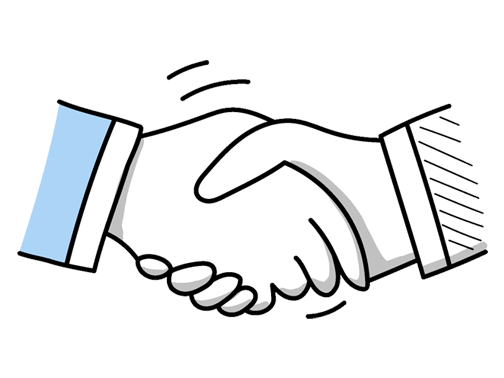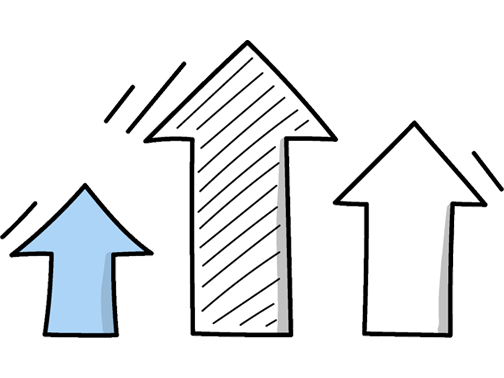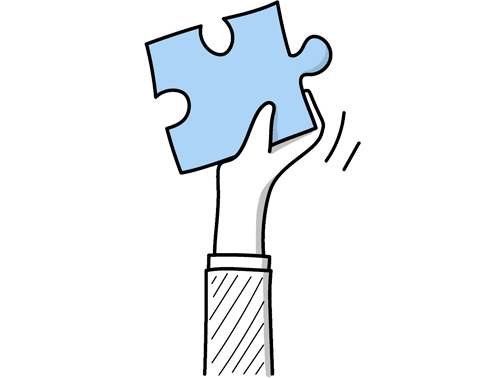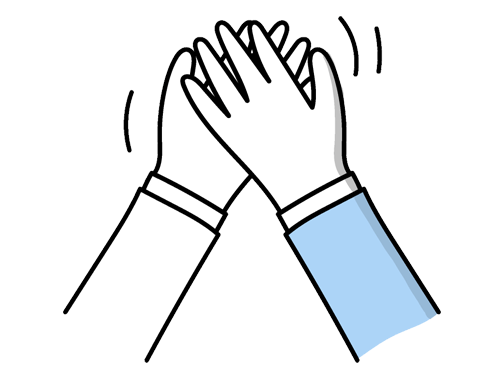Executive chef Interview Questions (2025 Guide)
Find out common Executive chef questions, how to answer, and tips for your next job interview
Practice Interviews Online - Identify your strengths and weakness in a realistic Executive chef mock interview, under 10 minutes
Practice Now »Executive chef Interview Questions
Interviewers ask this question to assess your technical skills, creativity, and ability to handle pressure while leading a kitchen. You need to describe a specific challenging dish, explain how you solved problems during its preparation, and share the positive impact it had on your team or customers.
Example: One memorable challenge was perfecting a sous-vide duck breast with a cherry reduction. Timing was crucial to get the texture right, so I adjusted cooking times carefully and involved the team in tasting sessions. This approach not only nailed the flavor and tenderness but also boosted our kitchen’s confidence in handling precise techniques, which customers praised for its consistency and depth of flavor.
Employers ask this question to understand how you manage and motivate your team to improve their skills and maintain high standards. You need to say you provide regular, constructive feedback that is specific and supportive, and you use performance reviews as opportunities to set clear goals and encourage growth.
Example: I see performance reviews as a two-way conversation, focusing on strengths and growth opportunities. I like to provide clear, constructive feedback regularly, not just in formal reviews, so staff feel supported every day. For example, after a busy service, I might highlight what went well and discuss small adjustments that could improve efficiency next time. It’s about building trust and encouraging continuous improvement in a positive environment.
Hiring managers ask this to see if you’re proactive about learning and adaptable in your culinary approach. You should say you regularly read industry publications and apply new trends to your menu planning to stay current and innovative.
Example: I make it a point to regularly explore industry publications and attend food festivals to catch emerging trends. I also keep in touch with fellow chefs and suppliers, which often sparks fresh ideas. When I find something promising, I like to experiment with it in the kitchen, then gradually introduce it to the menu to see how guests respond. It keeps the offerings dynamic and relevant.
Interviewers ask this to see if you can maintain control and lead effectively during stressful kitchen situations. You should explain how you stay calm, delegate tasks to your team, and prioritize problems to keep service running smoothly.
Example: In busy kitchen moments, I keep a clear head and stay focused on what needs to be done next. I trust my team, assigning tasks based on strengths to keep everything moving smoothly. When unexpected issues arise, I quickly assess and adjust priorities to maintain quality and timing. For example, during peak service, I’ve restructured station duties on the fly to handle sudden order spikes without compromising standards.
Employers ask this question to see how you balance cost control with strong supplier relationships. You need to say you research market prices beforehand, communicate openly with suppliers, and regularly monitor your budget to adjust orders for the best value.
Example: When negotiating with suppliers, I focus on building genuine, long-term partnerships that benefit both sides. I keep a close eye on our budget and adjust orders based on seasonal availability or promotions, which helps us stay flexible. For example, by discussing upcoming menus early, I’ve secured better rates on bulk items without compromising quality, creating a win-win situation that supports our kitchen’s needs and keeps costs manageable.
Interviewers ask this question to see how you handle interpersonal challenges and maintain a productive work environment. You should explain how you identified the conflict’s root cause, the steps you took to mediate and resolve it, and the positive results that followed.
Example: Sure. In a previous role, two team members clashed over prep responsibilities, which was slowing service. I sat down with them individually to understand their concerns, then brought them together to find common ground. By clarifying expectations and encouraging open communication, the tension eased quickly. It reminded me how important it is to listen carefully and address issues early, keeping the kitchen running smoothly and the team focused.
This interview question aims to assess your leadership skills and how you foster growth within your kitchen team to ensure quality and efficiency. You need to highlight your use of hands-on training, ongoing feedback, and creating opportunities for skill development to build a strong, motivated team.
Example: I focus on hands-on learning combined with clear, consistent communication. For example, I’ll work alongside team members during busy shifts, offering guidance and sharing techniques in real time. I also encourage asking questions and create opportunities for staff to take on new challenges gradually. This way, everyone grows confident and skilled without feeling overwhelmed. Regular feedback sessions help keep development on track and morale high.
Employers ask this question to see if you can manage costs efficiently while maintaining quality. You need to explain how you monitor expenses, control inventory, and adjust menus to stay on budget.
Example: Managing a kitchen budget starts with knowing your costs inside out—from suppliers to waste. I track inventory closely and work with the team to minimise waste without compromising quality. For example, we repurpose leftover ingredients creatively. Regular supplier reviews help us get the best prices, and I keep open communication with both the front and back of house to stay aligned financially and operationally.
Employers ask this to ensure you prioritize food safety and protect customers from health risks. You need to say you enforce strict hygiene, monitor proper food storage, and provide regular staff training on safety protocols.
Example: To keep food safe, I focus on maintaining clean workspaces and making sure everyone understands the importance of hygiene. I also emphasise correct storage—like keeping raw and cooked foods separate—and regularly check temperatures. Training the team is key; we run regular sessions to reinforce best practices, which helps us stay proactive and avoid any issues before they arise.
What they want to know is that you prioritize food safety and hygiene to prevent contamination and ensure a safe dining experience. You need to say that you implement strict cleaning schedules, train staff on proper sanitation, and regularly monitor all kitchen areas for cleanliness.
Example: Maintaining a clean kitchen starts with setting clear standards everyone understands and follows. I ensure all team members wash hands regularly and clean their stations throughout the day. Regular checks help catch any issues early, and equipment is cleaned after each use to prevent cross-contamination. For example, after prepping raw meat, we immediately sanitize surfaces before moving on, keeping everything safe and up to our hygiene standards.
What they want to understand is how you approach menu development to balance creativity, customer preferences, and operational efficiency. You need to explain the concept behind your menu, highlight its success with examples like customer feedback or sales increase, and emphasize how it met both quality and business goals.
Example: Certainly. At my previous role, I crafted a seasonal menu that highlighted local produce, balancing classic dishes with modern twists. One example was a beetroot-cured salmon starter, which became a customer favourite. This approach not only boosted sales but also strengthened supplier relationships and encouraged the kitchen team’s creativity, creating a dynamic dining experience that truly resonated with guests.
Hiring managers ask this question to see how you combine creativity with business sense and customer focus when developing a menu. You need to explain how you research customer preferences and trends, test and refine dishes through tastings, and manage costs and supplier relationships to create an appealing, profitable menu.
Example: When planning a new menu, I start by researching what diners are looking for and what’s trending locally. I like to experiment with dishes, gathering feedback from both the team and guests to fine-tune flavours. At the same time, I keep a close eye on ingredient costs and work closely with trusted suppliers to ensure quality and consistency. This balance helps create exciting menus that are both appealing and financially sustainable.
Hiring managers ask this question to see how you use customer insights to improve your menu and enhance the dining experience. You need to explain how you gather feedback through surveys or direct conversations, then show how you adjust dishes or add new items based on that input, and finally how you track the results through customer satisfaction or sales.
Example: I make it a point to listen carefully to what customers say, whether through direct comments, reviews, or informal chats. Then, I look for patterns to understand what works and what doesn’t. For example, if multiple guests mention a dish is too rich, I’ll adjust the recipe or offer a lighter option. After changes, I keep an eye on feedback and sales to ensure the menu better meets their tastes and keeps them coming back.
Questions like this help interviewers understand how you maintain quality and brand standards in a busy kitchen. You need to explain your use of standard recipes, staff training, and regular taste tests to keep dishes uniform in flavor and appearance.
Example: Consistency starts with clear standards and strong communication. I make sure every team member understands the recipe and presentation details by training hands-on and tasting alongside them. Regularly sampling dishes during service helps catch any variations early. For example, when I worked at a busy kitchen, this approach kept every plate meeting our signature quality, no matter who was on the line.
This interview question aims to assess your ability to innovate while meeting customer expectations. You need to explain how you incorporate customer feedback and trends into your creative ideas to ensure the menu appeals broadly.
Example: I believe the best menus marry creativity with what guests love. I like to introduce fresh ideas while respecting familiar flavours. For example, I might twist a classic British dish with an unexpected ingredient or technique, ensuring it excites without alienating. Listening closely to customer feedback helps me keep that balance, so the menu feels both innovative and welcoming.
Interviewers want to ensure you prioritize a safe kitchen environment to prevent accidents and maintain compliance. You should explain that you provide regular, clear training sessions, reinforce protocols through hands-on practice, and consistently monitor adherence to health and safety standards.
Example: When training staff on health and safety, I start with clear, practical sessions that connect protocols to everyday tasks. I like to use real kitchen scenarios, showing how following the rules prevents accidents. Regular reminders and hands-on practice keep the team confident and alert. For example, demonstrating correct knife handling or proper cleaning routines helps everyone understand the why behind each rule, making safety second nature.
This interview question helps assess your creativity, problem-solving, and how well you balance innovation with customer needs and kitchen operations. You need to explain your creative process, including how you research and test recipes, and mention how you adapt dishes based on customer preferences and practical constraints.
Example: When I create new dishes, I start by exploring fresh ideas inspired by seasonal ingredients and current food trends. I then test and refine recipes, balancing flavours with what our guests enjoy. I also consider how the dish fits with the kitchen’s workflow to ensure it can be executed consistently. For example, I once adapted a complex tasting menu item into a popular main course that both staff and customers loved.
What they want to understand is how you prioritize safety and handle urgent issues in a high-pressure environment. You need to explain a specific situation where you quickly identified a problem, took effective action to fix it, and ensured the kitchen remained safe for everyone.
Example: In a previous role, I noticed a team member using a dull knife, which increased the risk of accidents. I quickly organised a short refresher on proper knife handling and ensured all blades were sharpened regularly. This not only improved safety but also efficiency in the kitchen. Keeping open communication about such issues helps maintain a safe environment without disrupting the workflow.
Questions like this assess your ability to balance budget management with maintaining high food standards. You need to explain a specific strategy you used to cut expenses while ensuring dishes remained exceptional.
Example: In a previous role, I reviewed supplier contracts and introduced seasonal menus that used local ingredients, which lowered costs significantly. At the same time, I maintained high standards by training the team on reducing waste and proper portion control. This approach improved efficiency and kept customer satisfaction high, proving that thoughtful sourcing and team involvement can reduce expenses without affecting quality.
Questions like this assess your depth and versatility as a chef, showing you can handle diverse cooking styles and flavors. You need to briefly outline your experience with key techniques and cuisines, then share an example where your skills enhanced a dish or kitchen operation.
Example: Over the years, I’ve worked with everything from classic French sauces to vibrant Southeast Asian street food, adapting techniques like sous-vide and open-flame grilling to suit each style. This variety has helped me blend traditional methods with modern flair, whether crafting a delicate risotto or a bold curry, always focusing on efficiency without compromising flavor. It’s about understanding each cuisine’s essence and bringing it to life in the kitchen.
Interviewers ask this to see if you can manage budgets and minimize waste effectively. You need to explain using inventory tracking, portion control, and supplier negotiation to keep costs low without sacrificing quality.
Example: Controlling food costs is about smart planning and close team communication. I focus on precise portion control and regular inventory checks to reduce waste. Building strong relationships with local suppliers helps me get the best quality at fair prices. I also train the team to use ingredients efficiently—like repurposing trimmings into stocks—maximising value without compromising flavour or presentation.
This question assesses your ability to control costs and maintain kitchen efficiency through effective inventory management. You should explain how you use inventory tracking systems, optimize purchasing by negotiating with suppliers, and train staff on waste reduction and portion control to minimize waste and maximize efficiency.
Example: In my experience, keeping a close eye on stock through a reliable tracking system really helps prevent over-ordering and spoilage. Building strong relationships with suppliers allows for better negotiation and timely deliveries, which keeps costs down. I also believe in training the team regularly on portion control and smart storage habits—small changes like these can significantly cut waste and boost overall kitchen efficiency.
Questions like this assess your understanding of the importance of maintaining a safe and sanitary kitchen environment to protect staff and customers. You need to say that you implement strict training, conduct regular inspections, and enforce clear protocols to ensure everyone follows health and safety regulations consistently.
Example: Health and safety in the kitchen is non-negotiable, so I lead by example, making sure every team member knows and follows procedures. Regular training and clear communication help us stay sharp, whether it’s handling sharp tools or food storage. For example, I once introduced a checklist that dramatically reduced slip hazards during busy service. Keeping the environment safe is about constant attention and teamwork.
What they want to understand is how you inspire teamwork and maintain efficiency in a high-pressure environment. You need to say you lead by example, communicate clearly, and recognize your team's efforts to keep morale and productivity high.
Example: I believe motivation comes from respect and clear communication. I make sure everyone understands their role and feels valued. For example, celebrating small wins, like a well-executed service, boosts morale. I also encourage open feedback and create a supportive environment, so the team feels comfortable sharing ideas and challenges. Keeping the kitchen dynamic and positive helps us all perform at our best together.
Interviewers ask this to see if you understand how to balance creativity, cost, and customer preferences with ingredient availability. You need to say you consider seasonality of ingredients, customer tastes, food costs, and kitchen capabilities when designing a seasonal menu.
Example: When designing a seasonal menu, I focus on ingredients at their peak, ensuring freshness and flavour. I also consider local suppliers to support the community and reduce waste. Balancing dietary preferences while keeping dishes exciting is key. For example, in autumn, I might feature root vegetables and game, creating hearty yet innovative plates that reflect the season’s character. It’s about harmony between quality, creativity, and sustainability.
Ace your next Executive chef interview with even more questions and answers
Common Interview Questions To Expect
The interviewer is looking for your passion for the role, understanding of the company, alignment with the company's values, and how your skills and experience make you a good fit.
Example: I am really excited about the opportunity to lead a team and create innovative dishes at such a renowned restaurant like yours. I admire your commitment to using locally sourced ingredients and sustainable practices, which aligns with my own values. With my extensive experience in fine dining and passion for culinary excellence, I believe I can make a significant contribution to your team.
The interviewer is looking for how you handle criticism, your ability to reflect on feedback, and how you have used criticism to improve your work. Be honest and show growth.
Example: Sure! One time, a customer complained that their steak was overcooked. Instead of getting defensive, I apologized and offered to make them a new one. I took their feedback to heart and made sure to pay closer attention to cooking times in the future. It was a learning experience that helped me improve my skills as a chef.
The interviewer is looking for your commitment to ongoing learning and growth in your career. You can answer by discussing courses, certifications, workshops, or mentorship opportunities you plan to pursue.
Example: I'm always looking to improve my skills and stay current in the culinary industry. I plan to take some advanced cooking classes and maybe even pursue a certification in a specialized cuisine. I also want to attend some food industry conferences to network and learn from other professionals.
The interviewer is looking for examples of how you prioritize tasks, delegate responsibilities, and manage your time effectively in a fast-paced environment. Be prepared to provide specific examples from your experience.
Example: Yes, I am definitely able to handle multiple responsibilities at once. In my previous role as head chef at a busy restaurant, I was responsible for overseeing the kitchen operations, managing a team of chefs, creating menus, and ensuring food quality. I prioritized tasks by creating daily to-do lists, delegated responsibilities to my team members based on their strengths, and managed my time effectively to ensure everything ran smoothly.
The interviewer is looking for examples of how you have successfully collaborated with others, communicated effectively, and contributed to team goals. Be prepared to discuss specific instances and outcomes.
Example: Sure! In my previous role as an executive chef, I led a team of kitchen staff to create innovative menus and ensure smooth operations. We worked together to meet deadlines, communicate effectively, and deliver high-quality dishes to our customers. Our teamwork resulted in positive feedback from guests and increased revenue for the restaurant.
Company Research Tips
The company's official website is a goldmine of information. Look for details about the company's history, mission, and values. Pay special attention to any information about the company's food philosophy, sourcing practices, and menu development. This will give you a sense of what they value in their cuisine and how they operate their kitchen. Also, check if they have any blogs or articles about their current projects or future plans.
Tip: Look for any unique or innovative practices the company is known for. This could be a talking point during your interview.
Social media platforms like LinkedIn, Facebook, Instagram, and Twitter can provide valuable insights into the company's culture and operations. Look at their posts, comments, and reviews to understand their customer base, their popular dishes, and any challenges they might be facing. LinkedIn can also give you an idea of the company's size and the backgrounds of their current employees.
Tip: Pay attention to the tone and style of their posts. This can give you an idea of their brand personality.
Look for online reviews on platforms like Yelp, Google, and TripAdvisor. This can give you a sense of what customers think about the company's food and service. News articles can provide information about the company's reputation in the industry, any awards they've won, and their response to industry trends or challenges.
Tip: Look for patterns in the reviews. If many customers are praising or complaining about the same thing, it's likely a significant aspect of the company's operations.
Reach out to current or former employees of the company. They can provide insider information about the company's culture, expectations, and challenges. If you don't know anyone personally, you can use LinkedIn to find people who have worked for the company and reach out to them for a chat.
Tip: Be respectful and professional when reaching out to people. Make it clear that you're interested in learning about their experiences, not asking for a favor.
What to wear to an Executive chef interview
- Clean, well-fitted suit in neutral colours
- White or light-coloured dress shirt
- Conservative tie, avoid flashy patterns
- Polished dress shoes, preferably black
- Minimal jewellery, avoid flashy pieces
- Well-groomed hairstyle, avoid trendy cuts
- Clean, trimmed nails
- Light, professional makeup for women
- Avoid strong perfumes or colognes
- Carry a neat, professional bag or briefcase





